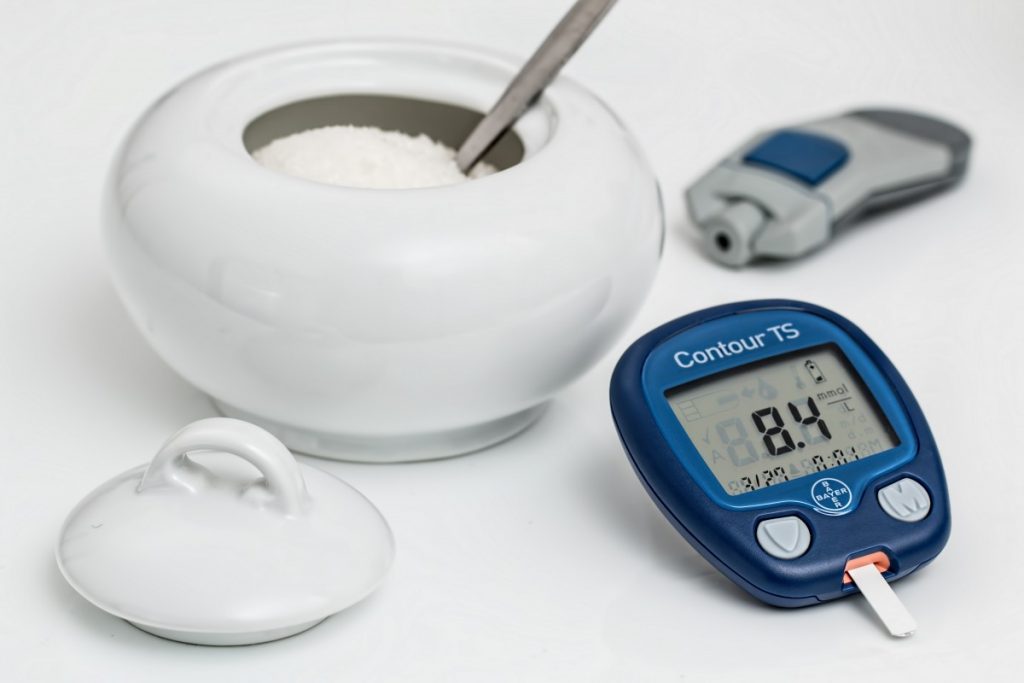Blood Glucose Test
Last updated: 29 November 2017
What is a blood glucose test?
Blood glucose (glu) may be elevated (HYPERglycaemia) in diabetes mellitus; there are different defining thresholds for diabetes depending on whether the test was taken as a random or fasting level. Low blood sugar is known as hypoglycaemia.
How is blood glucose measured?
Blood glucose can be measured as a simple bedside test on a small portable device called a glucometer, using a drop of blood from a fingerprick sample. It can also be measured by the laboratory, from a venous blood sample.
Whn would you need a blood glucose test?
Blood glucose is often routinely requested alongside a urea and electrolytes (U&E), as a random check on the blood sugar level. It may be specifically tested when there is a suspicion of diabetes (more correctly called diabetes mellitus). In this case, blood glucose may be tested as a random test, taken at any time of the day as convenient, or as a fasting blood glucose – usually taken first thing in the morning after an overnight fast.
Symptoms of diabetes include excessive thirst leading to increased fluid intake (polydipsia), frequent urination or increased urine output (polyuria), weight loss or weight gain, or frequent infections such as thrush (candidiasis) or skin infections.
Blood glucose test results explained
A blood glucose reading may be LOW, NORMAL, or HIGH.
Low blood sugar is known as hyopglycaemia.
A high blood sugar level is not always due to diabetes, and can be due to a stress response (due to hormones such as adrenaline being active in the bloodstream), or steroid medications such as prednisolone.
Blood glucose levels used to diagnose diabetes have changed over time; many doctors (including the Australian Diabetes Society) use the The World Health Organisation (WHO) criteria from 1999:
- A fasting blood glucose reading of 7 mmol/L or greater confirms a diagnosis of Diabetes Mellitus.
- A random (or 2-hour post-glucose) blood glucose reading of 11.1 mmol/L or greater confirms a diagnosis of Diabetes Mellitus.
- A fasting blood glucose reading of 6.1 to 6.9 mmol/L may be due to Impaired Glucose Tolerance (IGT) or Impaired Fasting Glucose (IFG). These conditions are differentiated from each other by performing an Oral Glucose Tolerance Test (GTT).
Related specialists
- General Practitioner (GP)
- Diabetologist
- Endocrinologist
- General Physician
- Obstetrician
- Occupational Health Physician
- Paediatrician
- General Surgeon
Related procedures
- Blood Test (venesection)
Related tests
Also known as
- Random Blood Glucose (RBG)
- Blood Sugar Level (BSL)
- Plasma Glucose Level (PGL)
- Blood Monitoring (BM)
- Fingerprick glucose
Links
A: Use HealthEngine to find and book your next GP appointment. Click on the following locations to find a GP clinic in your state or territory.
This article is for informational purposes only and should not be taken as medical advice. If in doubt, HealthEngine recommends consulting with a registered health practitioner.
All content and media on the HealthEngine Blog is created and published online for informational purposes only. It is not intended to be a substitute for professional medical advice and should not be relied on as health or personal advice. Always seek the guidance of your doctor or other qualified health professional with any questions you may have regarding your health or a medical condition. Never disregard the advice of a medical professional, or delay in seeking it because of something you have read on this Website. If you think you may have a medical emergency, call your doctor, go to the nearest hospital emergency department, or call the emergency services immediately.








